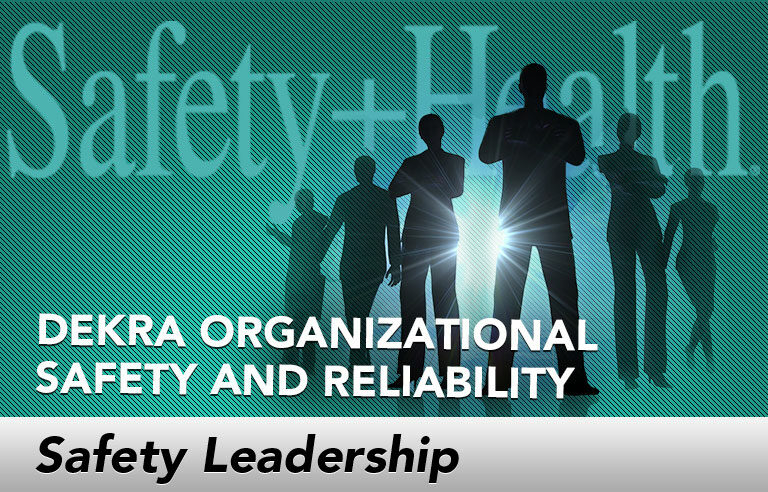Safety Leadership: Time to evolve: What the modern safety program needs to address

Editor’s Note: Achieving and sustaining an injury-free workplace demands strong leadership. In this monthly column, experts from global consulting firm DEKRA Insight share their point of view on what leaders need to know to guide their organizations to safety excellence.
The workplace is undergoing a revolution. From robots and artificial intelligence to a workforce more tech savvy than ever, industry has gone from mechanical production to a digital world of cutting-edge cyber physical systems.
This revolution is happening in safety, too. Advancements allow us to collect and analyze data in ways unimaginable 40 years ago. Smartphone apps share real-time data across organizations and engage a broader profile of the workforce in capturing, reviewing and, most importantly, acting on exposures.
Unfortunately, many organizations still are using safety programs from the past century. It’s time to evolve. New science and technology demand it. Here are four ways to get there:
1. Good technology needs good science. Having good safety technology alone isn’t enough. You need solid methodology behind everything you do. Unfortunately, scant data exists on what methods are most effective in today’s digital landscape.
The good news is that independent research from the University of Cambridge Judge Business School shows what works for improving safety and engaging employees. It shows that fewer observers familiar with the work doing more observations is the best approach, and specialization matters. Clients who focus on the critical safety issues, who adapt to changing risks and who coach observers did better than those who did fewer of these activities.
2. The definition of exposure is expanding. Today, we contend with an increasingly complex set of risks to employees and enterprises. Leaders must create safety systems that address all the exposures that put people at risk, including those that lead to serious and fatal injuries and brain-centric hazards. This means changing the way you do observations and how you capture data. You want to create a more complete picture of exposures and the measures needed to fix them.
In addition to person-to-person sampling, it’s beneficial to have select groups looking for the most critical exposures. Conduct regular walk-throughs to identify physical and behavioral exposures to ensure your data analysis passes the “eyeball test” and exposure change actually is happening at your organization.
3. Optimize resources. Leaders continually need to find ways to create greater performance with fewer resources. This “more with less” pressure means safety leaders need to more accurately pinpoint where they should be spending their dollars.
New thinking around safety provides companies the opportunity to change who does the work and how. This approach helps people at all levels lead exposure-reduction efforts and cuts down on the time involved to get that work done.
Furthermore, technology can help develop action plans a lot quicker – sometimes turning what used to take months to accomplish into a matter of weeks. A good data analytics tool can give you real-time feedback on what hurts and helps the worker in the field.
4. Increase engagement at all levels. It’s time to upgrade the employee engagement experience. Technology and distance can make the workplace seem less human. Leaders need ways to keep their people engaged if they are to ensure safe, reliable operations.
The right technology enables greater safety performance while creating a stronger connection between employees and the business mission. The trick is to use technology that allows employees to easily and intuitively find the information they need, report issues and respond to exposures.
Take a good look at your organization’s safety program and ask yourself, “Are we operating more like we’re in the past than truly responding to the safety needs of today?”
If so, it may be time to evolve.
This article represents the views of the authors and should not be construed as a National Safety Council endorsement.
 Don Groover, CIH (retired), CSP, is senior vice president with DEKRA Organizational Safety and Reliability (dekra-insight.com). Groover develops solutions that leverage the latest technology to improve safety performance in client organizations.
Don Groover, CIH (retired), CSP, is senior vice president with DEKRA Organizational Safety and Reliability (dekra-insight.com). Groover develops solutions that leverage the latest technology to improve safety performance in client organizations.
Direct to your inbox: Sign up to be notified in email about new "Safety Leadership" columns.
Post a comment to this article
Safety+Health welcomes comments that promote respectful dialogue. Please stay on topic. Comments that contain personal attacks, profanity or abusive language – or those aggressively promoting products or services – will be removed. We reserve the right to determine which comments violate our comment policy. (Anonymous comments are welcome; merely skip the “name” field in the comment box. An email address is required but will not be included with your comment.)

